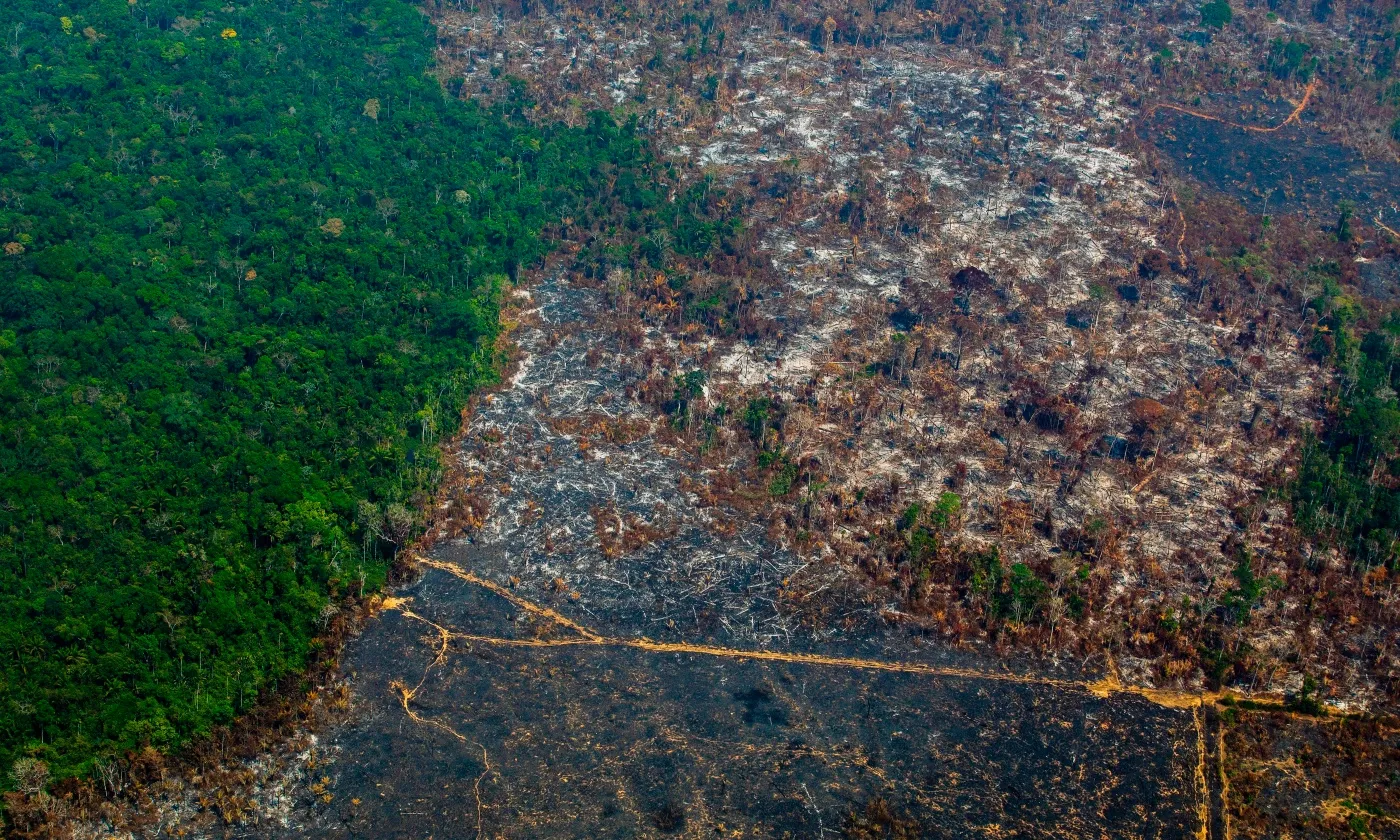Introduction
Deforestation has long been viewed as an environmental catastrophe, but a new report reveals that its consequences reach far beyond vanishing trees and disappearing wildlife. According to the findings, deforestation has been linked to nearly half a million premature deaths over the past two decades. This shocking revelation underscores the devastating ways in which the destruction of forests is connected to human health, from worsening air quality to deadly heatwaves and the spread of infectious diseases.
- Introduction
- The Hidden Toll of Deforestation on Human Lives
- How Deforestation Fuels Climate and Health Crises
- Air Pollution and Respiratory Illnesses
- Rising Temperatures and Heat-Related Deaths
- The Spread of Infectious Diseases
- Loss of Medicinal Plants and Indigenous Knowledge
- Regional Impacts of Deforestation and Mortality
- The Economic Burden of Deforestation on Public Health
- Expert Voices on the Human Cost of Deforestation
- Global Policy Failures and the Way Forward
- Frequently Asked Questions (FAQs)
- How does deforestation cause deaths?
- Which regions are most affected by deforestation-related deaths?
- Can reforestation reduce these health risks?
- What role do corporations play in deforestation?
- What can individuals do to help stop deforestation?
- Conclusion
The report emphasizes that environmental destruction is not an isolated issue confined to ecosystems. It is a direct threat to humanity itself. By examining data, expert voices, and real-world stories, it becomes clear that deforestation is not only an ecological crisis but also a public health emergency of global proportions.
The Hidden Toll of Deforestation on Human Lives
For decades, conversations on deforestation have focused on its role in biodiversity loss, soil degradation, and global warming. Yet this report highlights how those issues translate into a devastating human toll. Between 2000 and 2020, scientists estimate that the environmental changes linked to deforestation contributed to the premature deaths of nearly 500,000 people worldwide.
One of the leading causes of these deaths is wildfire smoke, which has grown more intense as forests are cleared for agriculture and development. Trees act as natural barriers, maintaining ecosystems that regulate fire patterns. Once removed, landscapes become more vulnerable to uncontrollable blazes. The fine particles released into the air by these fires penetrate human lungs and bloodstreams, causing respiratory illnesses, heart disease, and strokes. These deaths represent not just statistics but real families and communities devastated by preventable outcomes.
How Deforestation Fuels Climate and Health Crises
Air Pollution and Respiratory Illnesses
Deforestation through burning releases massive amounts of carbon dioxide and hazardous particles into the atmosphere. In regions like South America and Southeast Asia, air pollution caused by slash-and-burn agriculture blankets cities for weeks. Schools close, businesses shut down, and hospitals become overwhelmed by patients suffering from asthma, bronchitis, and chronic obstructive pulmonary disease. The World Health Organization warns that prolonged exposure to such pollution can shorten lifespans significantly.
Rising Temperatures and Heat-Related Deaths
Forests regulate local climates by releasing moisture into the air and absorbing heat. When trees vanish, temperatures in surrounding areas rise sharply. This intensifies heatwaves that can be deadly, particularly in tropical countries where vulnerable communities often lack access to cooling systems. In some deforested regions, temperatures are consistently several degrees higher than in nearby forested areas, creating dangerous living conditions.
The Spread of Infectious Diseases
Clearing forests brings humans into closer contact with disease-carrying animals like bats, rodents, and mosquitoes. These species thrive in disturbed landscapes and often move into human settlements. As a result, diseases such as malaria, dengue, and emerging viral infections spread more rapidly. The COVID-19 pandemic reignited concerns about how deforestation and habitat loss may fuel future pandemics.
Loss of Medicinal Plants and Indigenous Knowledge
Forests provide vital medicinal resources. Millions rely on natural remedies derived from plants found in forests, many of which are used in modern medicine. The destruction of these ecosystems erases both the plants themselves and the traditional knowledge of indigenous communities who have safeguarded these remedies for centuries. Humanity loses potential cures for future illnesses with every acre destroyed.
Regional Impacts of Deforestation and Mortality
South America
The Amazon rainforest, often described as the “lungs of the Earth,” has been heavily damaged by cattle ranching, soy farming, and illegal logging. Fires that rage across the Amazon release toxic smoke, which has been linked to thousands of premature deaths each year in Brazil and neighboring countries. Children, pregnant women, and the elderly face the highest risks.
Southeast Asia
Indonesia and Malaysia have seen severe health crises caused by haze from palm oil plantations and forest burning. These haze episodes often shut down airports and schools while sending thousands to hospitals with respiratory problems. Researchers estimate tens of thousands of deaths in Southeast Asia over the past two decades are directly tied to haze-related illnesses.
Africa
Central and West Africa face deforestation driven by logging and agricultural expansion. The loss of tree cover disrupts rainfall patterns and increases mosquito populations, fueling malaria outbreaks. In countries across the Congo Basin, deforestation is accelerating public health challenges, including water insecurity and higher mortality rates from preventable diseases.
Global North
Even wealthy nations are affected. Deforestation contributes to global climate change, which fuels extreme weather events. Europe and North America have experienced deadly heatwaves that scientists link partly to deforestation and land-use change. In Canada’s 2021 heat dome, hundreds of lives were lost to extreme temperatures intensified by the broader climate crisis.
The Economic Burden of Deforestation on Public Health
The health consequences of deforestation carry staggering economic costs. Public healthcare systems spend billions annually on treating illnesses tied to air pollution, heat stress, and infectious diseases exacerbated by environmental destruction. For example, haze events in Southeast Asia alone cost governments billions in healthcare spending and lost productivity. In Brazil, respiratory illnesses caused by Amazon fires place heavy strain on hospitals and budgets. Tackling deforestation is therefore not only an environmental responsibility but also a financial necessity.
Expert Voices on the Human Cost of Deforestation
Health and environmental experts are sounding alarms about the intertwined crises. Dr. Maria Neira, Director of Public Health and Environment at WHO, notes that “the environment and human health are inseparable. When forests are destroyed, it is not only ecosystems that die—it is people too.”
Economist Nicholas Stern emphasizes that “the hidden costs of deforestation, when measured in human lives and public health, make it one of the most reckless economic activities of our time.”
Indigenous leaders like Chief Raoni Metuktire of the Amazon remind the world that their warnings about protecting forests are rooted in centuries of lived experience. Their voices highlight that protecting forests is not just about conservation but also about safeguarding human life.
Global Policy Failures and the Way Forward
Despite repeated climate summits and pledges, deforestation continues at alarming rates. Governments often prioritize short-term economic gain from logging, mining, and agriculture over long-term sustainability. International agreements, including the Paris Climate Accord, acknowledge the importance of forests, but enforcement remains weak.
Experts propose urgent steps to reverse this trend. These include strengthening global agreements, investing in reforestation, empowering indigenous communities as forest guardians, and holding corporations accountable for destructive supply chains. Public awareness campaigns are also vital to highlight the direct connection between deforestation and human mortality.
Frequently Asked Questions (FAQs)
How does deforestation cause deaths?
Deforestation leads to deaths through air pollution, heatwaves, and infectious diseases. Wildfire smoke harms lungs, heatwaves become deadlier without tree cover, and disease-carrying animals move closer to humans.
Which regions are most affected by deforestation-related deaths?
South America, Southeast Asia, and Africa face the most direct impacts, though even developed regions like Europe and North America experience consequences through climate change and extreme weather.
Can reforestation reduce these health risks?
Yes. Restoring forests can help regulate temperatures, improve air quality, and restore ecosystems. Reforestation, however, must be paired with strong protections against further deforestation.
What role do corporations play in deforestation?
Corporations drive much of the deforestation through demand for commodities like beef, soy, and palm oil. Unsustainable supply chains are a major cause of forest destruction and its related health impacts.
What can individuals do to help stop deforestation?
Individuals can support sustainable products, reduce meat consumption, pressure governments for stronger protections, and back organizations working to protect forests. Small actions collectively have a large impact.
Conclusion
The revelation that deforestation has been linked to nearly half a million deaths over the past two decades is a sobering reminder that environmental destruction is inseparable from human survival. Every tree lost weakens our planet’s defenses against pollution, extreme heat, and disease. The evidence shows that deforestation is not only driving climate change and biodiversity loss but also claiming human lives on a massive scale.
The choice before the world is clear. Governments, corporations, and individuals must act decisively to halt deforestation and restore forests before the death toll climbs higher. Protecting forests is not merely about preserving nature—it is about preserving humanity itself. Saving forests is, quite literally, saving lives.



